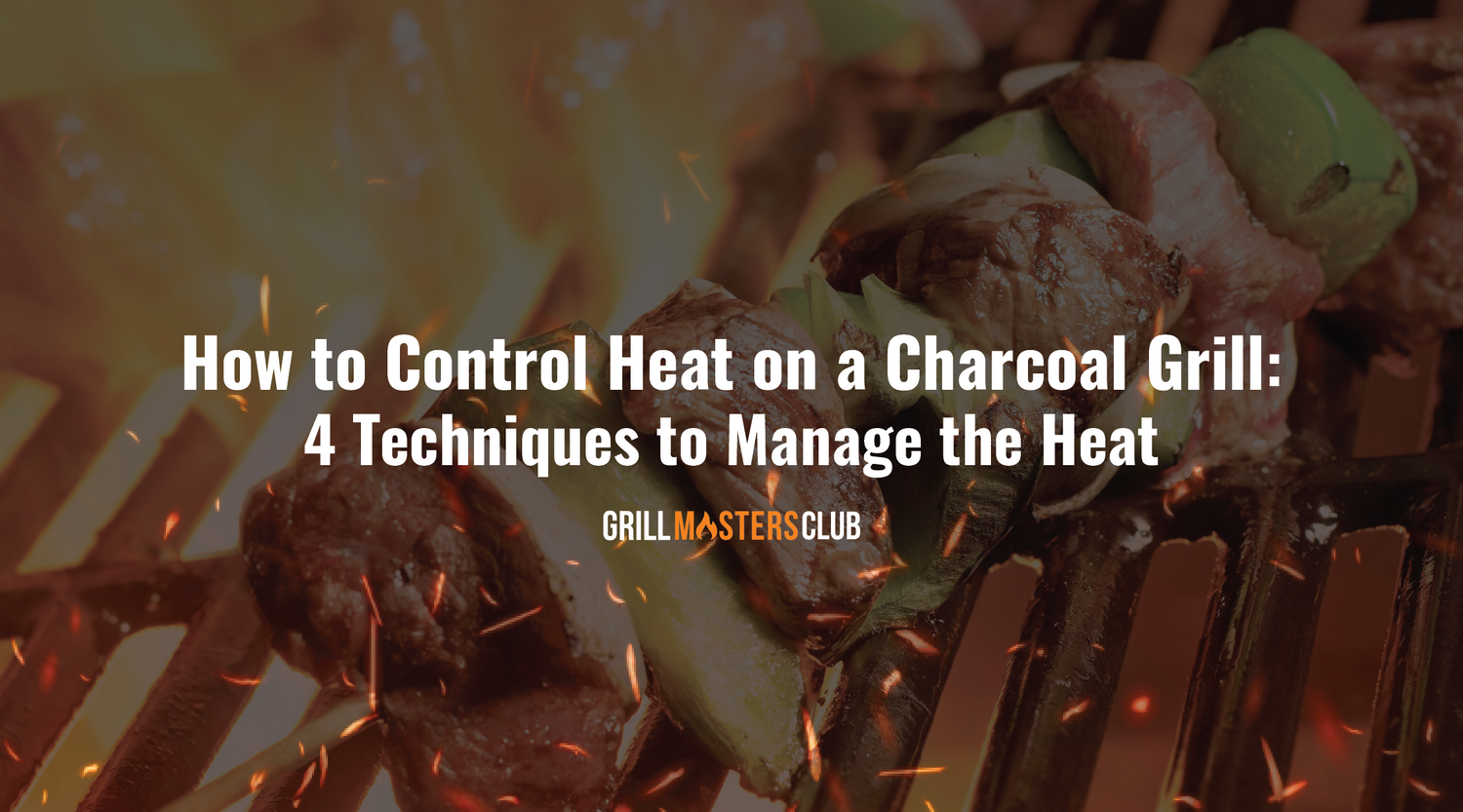How to Control Heat on Your Charcoal Grill: 4 Techniques
Table of Contents
Intro on Charcoal Grill Techniques
Charcoal is notoriously difficult to control...which is why your chicken was burnt on the outside, yet still raw on the inside. And thus, the importance of knowing how to control heat on your charcoal grill!If you want your food grilled to perfection -- and who doesn't, of course -- you need to control the temperature. It’s got to be hot enough to cook, but not too hot that it burns.On top of that, you may well want to cook different recipes at different heats. For example, you will want to cook a steak on high heat, so that it is seared on the outside, but still nice and pink in the middle.On the other hand, something like chicken or pork will generally require a lower, more even temperature so that it's cooked through.Below, save this awesome infographic to help you in your charcoal grilling endeavors:

Share This Image On Your Site
Find the infographic above useful? Feel free to embed it on your website or blog by copying the code below (please link to GrillMastersClub.com for attribution).<p><strong>Please include attribution to GrillMastersClub.com with this graphic.</strong><br /><br /><a href='https://grillmastersclub.com/control-heat-on-charcoal-grill/'><img src='https://cdn.shopify.com/s/files/1/0649/4388/2457/files/charcoal-1805-1.jpg?v=1661507487' alt='How to Control Heat on Your Charcoal Grill' width='800px' border='0' /></a></p>
1. Build a Food Guard On Your Charcoal Grill
What to do:
- Grab some aluminum foil and fold it in the same way that you would fold a letter to place inside and envelope.
- Remove your meat or food from the charcoal grill and set aside.
- Place your aluminum foil food guard on the grill
- Put your meat or food back onto the grill atop your aluminum foil guard and voila!
What it does:
A food guard creates a layer of protection between the food and the flame -- meaning that a barrier is formed. This slows down the cooking process. By introducing a barrier of aluminium foil between your food and the flames, the food is no longer exposed to the direct flame or the direct heat that will lead to burnt.When to do it:
The aluminum foil food guard for your charcoal grill is a somewhat of an emergency solution or quick fix for when the temperature on your charcoal grill is too high and unmanageable.In these instances, which can arise often regardless of skill level, it's a great tool to have in your BBQ arsenal.Instead of trying to remove some of the fuel, which is dangerous and we definitely do not recommend, you can employ this strategy as a workaround.2. Create Cooking Zones on Your Charcoal Grill
Layering the charcoal to create cooking zones, or areas, requires a little bit of extra preparation before firing up the grill, but it's almost guaranteed to make life easier for you when it comes time to grill.What to do:
The idea is pretty straightforward, whether you set it up from back to front or left to right on your grill.The first zone will serve as the hottest part of your grill, which you'll use for sealing and searing. Basically, you can use this zone for anything that needs to be cooked at high temperature.Your second zone is for food like chicken or pork that require a lower grilling temperature. This is the medium heat area for cooking.Finally, the third zone is the control zone. This is a completely heat free zone that you'll mainly use for resting the meat, or if the other areas get a little too hot and you need to re-adjust the temperature.Creating zones on your charcoal grill is a lot easier than it sounds. It’s simply about layering the coals strategically:- On the far right, in the control zone, do not layer any charcoal.
- In the other two zones, place a layer of charcoal, spreading or raking them out flat.
- Finally, on the far left (your hot zone) add a second layer of charcoal, raking them out flat (only under the third zone).










